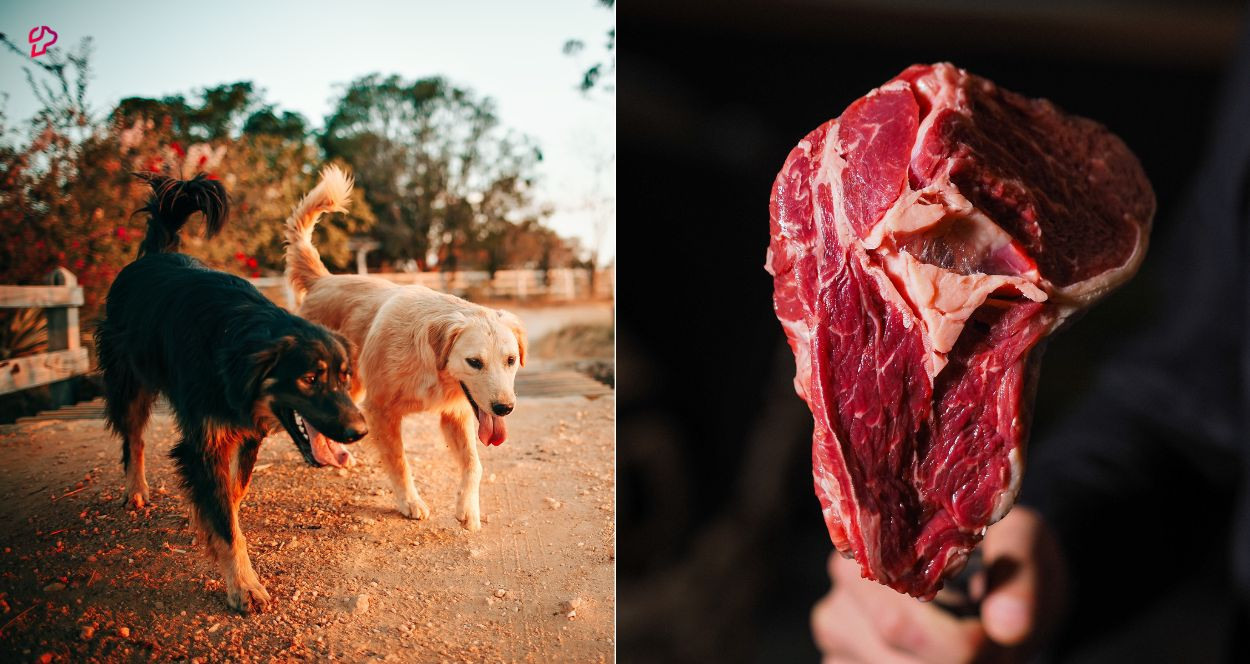In recent years, there has been a growing trend of pet owners exploring alternative diets for their furry companions. One of the debates that often arises is whether it's safe and beneficial to feed dogs raw meat sourced from the supermarket. As responsible pet owners, it's crucial to consider the nutritional needs and well-being of our canine companions. In this article, we will delve into the intricacies of feeding dogs raw meat from the supermarket, examining both the advantages and potential risks associated with this practice.

Understanding a Dog's Diet:
To determine the appropriateness of feeding raw meat to dogs, it's essential to understand their natural dietary preferences. In the wild, canines are carnivores, primarily subsisting on a diet of raw meat, bones, and occasional plant matter. While domesticated dogs have adapted to human-influenced diets over time, their basic nutritional requirements remain rooted in their ancestral heritage.
Raw Feeding: Pros and Cons:
Pros of Raw Feeding:
Proponents of raw diets for dogs advocate several potential benefits. Improved coat condition, enhanced dental health, and increased energy levels are often reported by raw feeding enthusiasts. Additionally, some dogs may experience a reduction in allergies and digestive issues when switched to a raw diet.
Cons of Raw Feeding:
However, raw feeding also comes with its share of concerns. The risk of bacterial contamination and food borne illnesses is notably higher with raw meat consumption. Ensuring a balanced diet that meets all of a dog's nutritional needs can also be challenging, potentially leading to nutrient deficiencies over time.
Selecting Meat from the Supermarket:
Quality Matters:
When considering feeding raw meat to your dog, prioritise quality over quantity. Opt for fresh, high-quality meats from reputable sources. Lean meats are generally preferable, as excessive fat content can lead to obesity and other health issues.
Variety and Balance:
A key principle of raw feeding is variety. Dogs require a diverse range of nutrients, and offering various meats ensures a balanced diet. Incorporate organ meats and bones to provide essential vitamins, minerals, and calcium.
Safe Handling and Preparation:
Hygiene Practices:
Maintaining strict hygiene practices is paramount when handling raw meat. Wash hands, utensils, and surfaces thoroughly after each preparation session to prevent cross-contamination. Store raw meat separately from human food to minimise the risk of bacterial transfer.
Preparation Techniques:
Before feeding raw meat to your dog, take precautions during preparation. Properly freeze meat to kill potential parasites, thaw in the refrigerator to avoid bacterial growth, and portion meals to prevent waste. Be cautious of bones that could splinter and pose a choking hazard.
Transitioning to a Raw Diet:
Gradual Transition:
If you're considering switching your dog to a raw diet, do so gradually. Introduce small amounts of raw meat while gradually reducing their current food. Monitor your dog's response closely, ensuring they tolerate the change well without digestive disturbances.
Consulting a Veterinarian:
Importance of Professional Guidance:
Before embarking on a raw feeding journey, consult a veterinarian. They can guide you in creating a balanced raw diet tailored to your dog's specific needs. Regular veterinary check-ups are crucial to monitor your dog's overall health and ensure the diet's efficacy.
FAQs:
Q1: Is it safe to feed my dog raw meat?
Absolutely, but precautions are necessary. Choose high-quality meats, follow safe handling practices, and consult your vet for guidance.
Q2: Can I feed my dog only raw meat or should I include other foods?
A well-rounded diet is essential. Incorporate a variety of meats, bones, and consult your vet for additional dietary components.
Q3: Are there any specific meats I should avoid feeding my dog?
Certain meats, like pork, can pose health risks. Consult your vet for a list of safe options.
Q4: How do I handle and store raw meat for my dog's diet?
Practice strict hygiene, keep raw meat separate, freeze and thaw properly, and portion meals to ensure freshness and safety.
Q5: What are the signs that my dog is not tolerating the raw diet well?
Watch for symptoms like vomiting, diarrhoea, or changes in behaviour. Consult your vet if you notice any adverse reactions.
Conclusion:
Feeding your dog raw meat from the supermarket can be a viable option, provided it's approached with careful consideration and informed decision-making. While there are potential benefits to raw feeding, it's essential to be mindful of the associated risks, particularly bacterial contamination. Prioritise quality, variety, and hygiene to ensure your dog's well-being. By consulting a veterinarian and adhering to safe practices, you can provide your furry companion with a balanced and nutritious diet that supports their overall health and vitality. Remember, every dog is unique, and what works well for one may not be suitable for another. Regular monitoring and adjustments to the diet, under professional guidance, can help ensure that your dog thrives on a raw feeding regimen.
In this modern age of pet care, the concept of feeding raw meat to dogs from the supermarket has garnered both intrigue and scepticism. As a responsible dog owner, you have the power to make an informed choice that aligns with your pet's well-being. By delving into the world of raw feeding, you're taking a proactive step toward providing your canine companion with a diet reminiscent of their ancestors, coupled with contemporary insights and veterinary oversight.
As you embark on this culinary journey for your four-legged friend, remember that a little preparation can go a long way in ensuring a safe and wholesome raw diet. With careful selection, handling, and monitoring, you have the potential to unlock the nutritional benefits that raw meat can offer to your dog's life. Just as your dog enriches your life with boundless loyalty and joy, you have the opportunity to repay that companionship with the gift of healthful nourishment.









